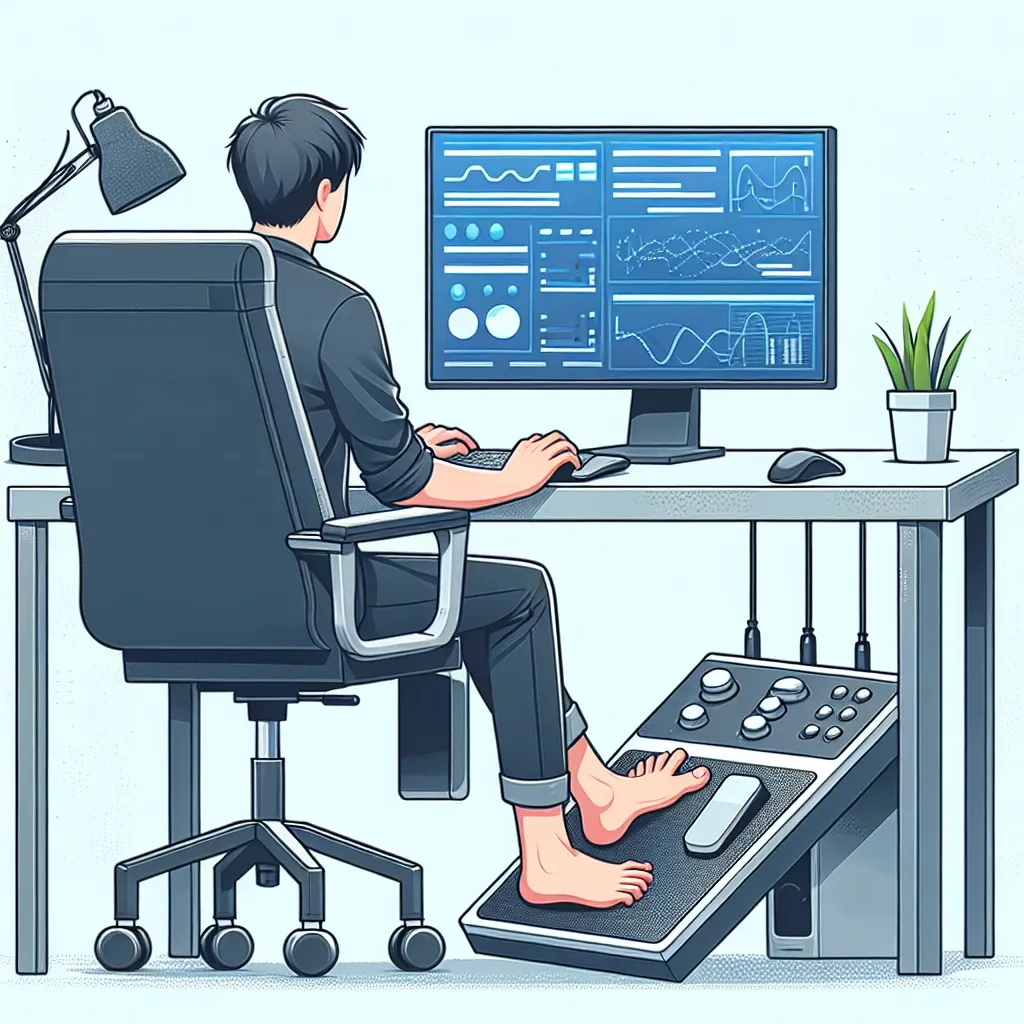What advantages do foot-controlled computer input devices offer?
In our rapidly evolving digital age, foot-controlled computer input devices are emerging as innovative tools that offer unique advantages. These devices allow users to perform a variety of functions using their feet, freeing up their hands for other tasks. This article will delve into the many benefits these devices provide, making a strong case for their adoption in various fields.
Ergonomic Benefits
One of the primary advantages of foot-controlled input devices is the ergonomic benefit. Constantly using a mouse and keyboard can lead to repetitive strain injuries (RSIs) and other musculoskeletal issues. Foot pedals can reduce the risk of these problems by distributing the physical workload more evenly across the body.
- Reduced Strain: Using foot pedals can alleviate the strain on hands and wrists associated with prolonged mouse and keyboard use.
- Natural Movement: The large muscle groups in the legs are well-suited for repetitive tasks without the fatigue felt in the smaller muscles of the hands and wrists.
Enhanced Productivity
These devices can significantly enhance productivity by allowing users to perform multiple tasks simultaneously. This is especially beneficial in professions that require multitasking and constant interaction with computer systems.
- Multitasking: Foot pedals allow for seamless multitasking, enabling users to perform actions with their feet while their hands are occupied with other tasks.
- Customizable Functions: Many foot-controlled devices offer customizable functions, allowing users to tailor the device to their specific workflow needs.
Accessibility
Foot-controlled input devices also offer substantial benefits for individuals with disabilities. These devices can provide an alternative method of interaction for those who may have limited use of their hands or arms.
- Inclusive Design: Foot pedals can make computer systems more accessible to people with various physical limitations.
- Alternative Input Method: Offering an alternative to traditional input methods, foot controls can empower users to interact with technology in new ways.
Applications in Various Fields
The advantages of foot-controlled input devices extend across multiple fields. Below is a table summarizing several notable applications:
| Field | Application |
|---|---|
| Healthcare | Surgeons can use foot pedals to navigate medical imaging or surgical tools, keeping hands sterile. |
| Manufacturing | Operators can control machinery while keeping their hands free for manual tasks. |
| Music Production | Musicians can use foot pedals to control recording software or instruments. |
| Gaming | Gamers can use foot pedals for in-game actions, allowing for more immersive experiences. |
| Office Work | Professionals can use foot pedals for tasks such as dictation or navigating software, increasing efficiency. |
Types of Foot-Controlled Devices
There are various types of foot-controlled devices available, each offering different functionalities to suit specific needs:
- Foot Pedals: These are the most common and come with one or more pedals that can be programmed for different functions.
- Foot Mice: These devices enable users to control the cursor movement with their feet.
- Foot Joysticks: These are used in specific applications like gaming or certain industrial tasks to provide precise control.
Future Prospects
With advancements in technology, the future looks promising for foot-controlled computer input devices. Innovations in this space are likely to lead to even more ergonomic designs and functionalities, making them an integral part of workstations in various industries.
In conclusion, foot-controlled computer input devices offer numerous advantages, ranging from enhanced ergonomics and productivity to increased accessibility. As these devices continue to evolve, their adoption is expected to grow, making them valuable tools in diverse fields.

